A Comparison of Singles Rules in Pickleball and Sandy Pickle
While doubles is the most popular format in both pickleball and Sandy Pickle, a singles match is the true test of player stamina & athleticism. Note that Sandy Pickle is played on grass or sand, while pickleball is played on a hard surface. As you might expect, many of the rules remain the same in all formats of the sport (or at least similar), the primary differences are outlined below:
1. Court Dimensions:
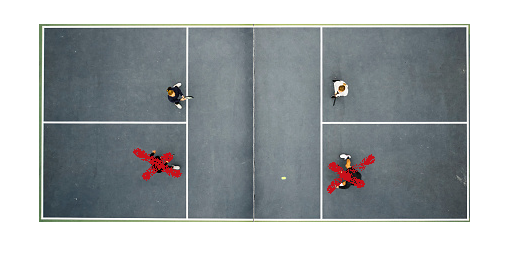 Interestingly, the playable area of a pickleball court is exactly the same for both singles and doubles. Covering twice as much area as you do in doubles presents an obvious challenge, and if you’re looking for a way to burn more calories per match, here you go! With or without a partner, your side of the pickleball court is 22′ long and 20′ wide.
Interestingly, the playable area of a pickleball court is exactly the same for both singles and doubles. Covering twice as much area as you do in doubles presents an obvious challenge, and if you’re looking for a way to burn more calories per match, here you go! With or without a partner, your side of the pickleball court is 22′ long and 20′ wide.
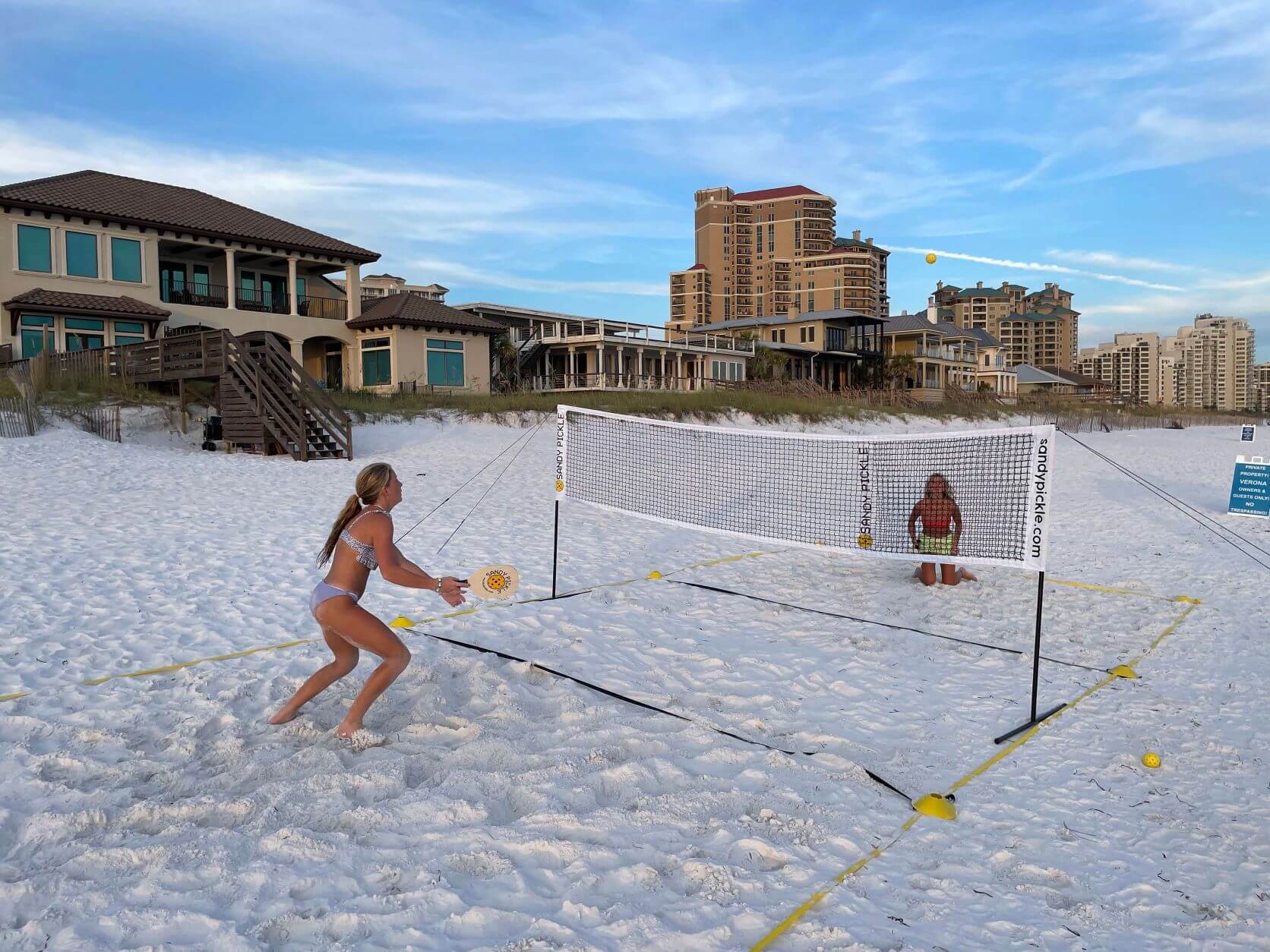
Players can’t move as fast on grass or sand as on a hard court, and with no bounces, every shot in Sandy Pickle must be hit before the ball hits the ground. While there’s still a major calorie increase between doubles and singles, a Sandy Pickle singles court is narrower and shorter than the doubles court. The singles court width is 13′ 6″ (4.1 meters), and doubles is 16′ 8″ (5.1 meters), with baselines at 16′ for singles and 18′ for doubles.
2. Regulation Net Height
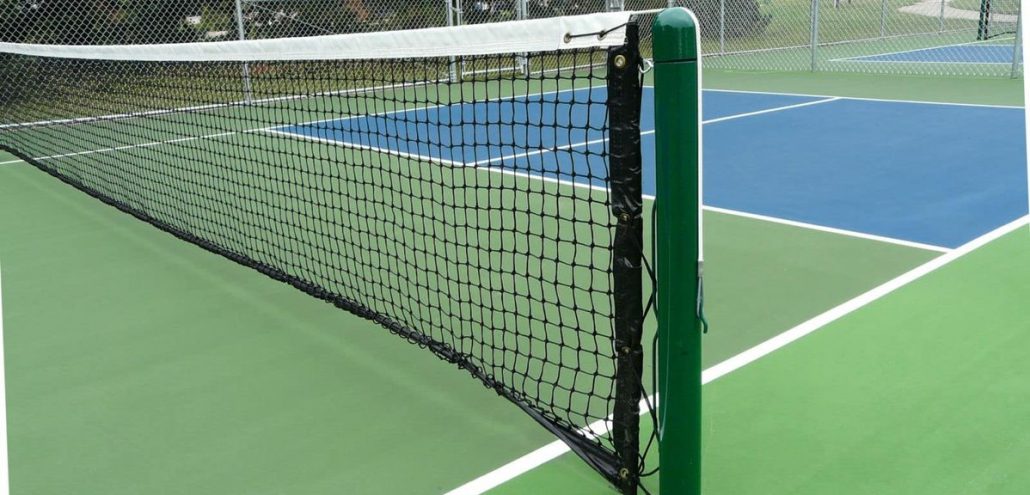 Pickleball nets should always be 36″ high on each sideline and tapering down to 34″ in the middle. Don’t worry, singles pickleball rules are coming, we just want you to know all relevant regulation measurements!
Pickleball nets should always be 36″ high on each sideline and tapering down to 34″ in the middle. Don’t worry, singles pickleball rules are coming, we just want you to know all relevant regulation measurements!
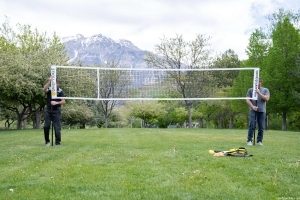
In Sandy Pickle, the net height is adjustable. For both singles and doubles, the net height should be set to the approximate height of the tallest player on the court.
*For tournament play, the default height is 6’ but may be modified to accommodate for optional height and/or skill divisions.
3. The Pickleball “Kitchen” aka “No Volley Zone”; aka “No Spike Zone” in Sandy Pickle
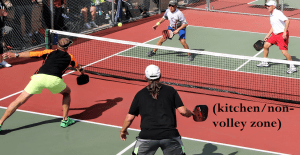 In pickleball (singles and doubles), the kitchen line is set at 7′ from the net on both sides. There are 3 rules to know as it relates to the area between the net and this line: 1) The serve must land beyond the kitchen (a ball landing on the line is a fault), 2) No player may step on or go beyond the kitchen line to hit a ball until/unless the ball has bounced inside the kitchen area, and 3) Should a players paddle, cap, knee, hand, or any other body part, article of clothing or equipment touch or land in the kitchen when executing a volley (before the bounce), it is a fault, even if the player did not step on or enter the kitchen. An interesting note: a player is free to enter and stand in the kitchen at any time during play as long as they don’t hit a volley while there. It seems irrelevant, but there may be a good reason to do this, we just don’t know what it is (yet?).
In pickleball (singles and doubles), the kitchen line is set at 7′ from the net on both sides. There are 3 rules to know as it relates to the area between the net and this line: 1) The serve must land beyond the kitchen (a ball landing on the line is a fault), 2) No player may step on or go beyond the kitchen line to hit a ball until/unless the ball has bounced inside the kitchen area, and 3) Should a players paddle, cap, knee, hand, or any other body part, article of clothing or equipment touch or land in the kitchen when executing a volley (before the bounce), it is a fault, even if the player did not step on or enter the kitchen. An interesting note: a player is free to enter and stand in the kitchen at any time during play as long as they don’t hit a volley while there. It seems irrelevant, but there may be a good reason to do this, we just don’t know what it is (yet?).
Similarly in Sandy Pickle, the area within 5’ of the net on each side is called the “No Spike Zone”. 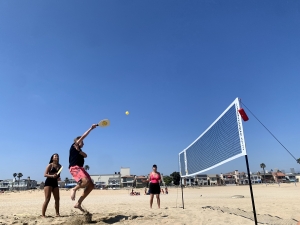 On each serve, the ball must pass this line. If the ball hits the ground and touches the kitchen line (or any line for that matter), however, unlike in pickleball, the ball is “in” and the serving team is awarded the point. The player returning the serve must be standing behind the no spike zone line. The “no spike zone” extends upward from that line, and the player returning the serve may not break the plane of the line on the return; At all other times, the only restriction to playing inside this area is that spiking is not allowed inside the boundary. When playing inside this area, the trajectory of the ball must either be upward or flat; a downward ball path results is a fault.
On each serve, the ball must pass this line. If the ball hits the ground and touches the kitchen line (or any line for that matter), however, unlike in pickleball, the ball is “in” and the serving team is awarded the point. The player returning the serve must be standing behind the no spike zone line. The “no spike zone” extends upward from that line, and the player returning the serve may not break the plane of the line on the return; At all other times, the only restriction to playing inside this area is that spiking is not allowed inside the boundary. When playing inside this area, the trajectory of the ball must either be upward or flat; a downward ball path results is a fault.
*Note, the no spike zone extends upward from the line, meaning that a ball hit with a downward trajectory must leave the paddle behind this imaginary plane.
4. One Pass, or “BUMP”
Did we mention that pickleballs don’t bounce well on sand or grass? During the later stages of testing, we realized that in the fast-paced exchange of shots, there were plenty of mis-hits that stayed in the air long enough for a teammate to send the ball back over the net. The suggestion was made that we try allowing a pass, whether or not the second shot opportunity was intentional.
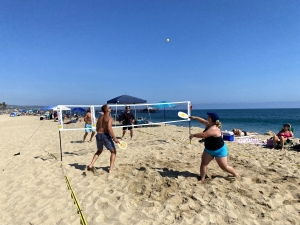 The addition of the 1-pass rule is now an official part of the game, however, it applies only in doubles play. The resulting longer, volley-only rallies make this already fast-paced game almost as fun to watch as it is to play!
The addition of the 1-pass rule is now an official part of the game, however, it applies only in doubles play. The resulting longer, volley-only rallies make this already fast-paced game almost as fun to watch as it is to play!
5. Serving
Serves are made from behind the baseline on the right hand side of the court (similar to volleyball) with no limitations as to which side of the court the serve is hit to. The non-serving partner plays the left (“backhand”) side of the court; teammates switch positions when the serve returns to their side after winning a defensive side-out. The player serving continues until they lose a point, after which the opposing team takes over the serve (in Sandy Pickle the serve alternates sides at the end of each players serving opportunity, unlike pickleball in which both teammates serve before a side-out).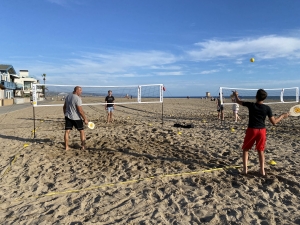
Also unlike pickleball, players may serve overhead, underhand, backhand, sidearm or otherwise so long as they serve from behind the baseline and the ball makes it over the net, beyond the no-spike zone, and within the boundaries. A serve is “out” if it lands within the no-spike zone or outside court boundaries. If the ball hits the net but lands within the boundaries, it is considered “in” (similar to pickleball).
6. Scoring
Like pickleball, games are played to 11 points and must be won by 2 (or more). A point is earned when the player or team serving wins the point. If the player or team RECEIVING the serve wins the point, they take over the serve.
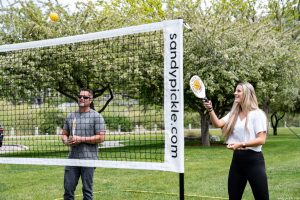 Scoring Note: When a team is winning 7-6, for example, the player serving would call out “7-6” rather than “7-6-1”. For experienced pickleball players, three-digit scoring calls are routine; for most of everyone else, the confusion warranted simplification in the official Sandy Pickle rules.
Scoring Note: When a team is winning 7-6, for example, the player serving would call out “7-6” rather than “7-6-1”. For experienced pickleball players, three-digit scoring calls are routine; for most of everyone else, the confusion warranted simplification in the official Sandy Pickle rules.


